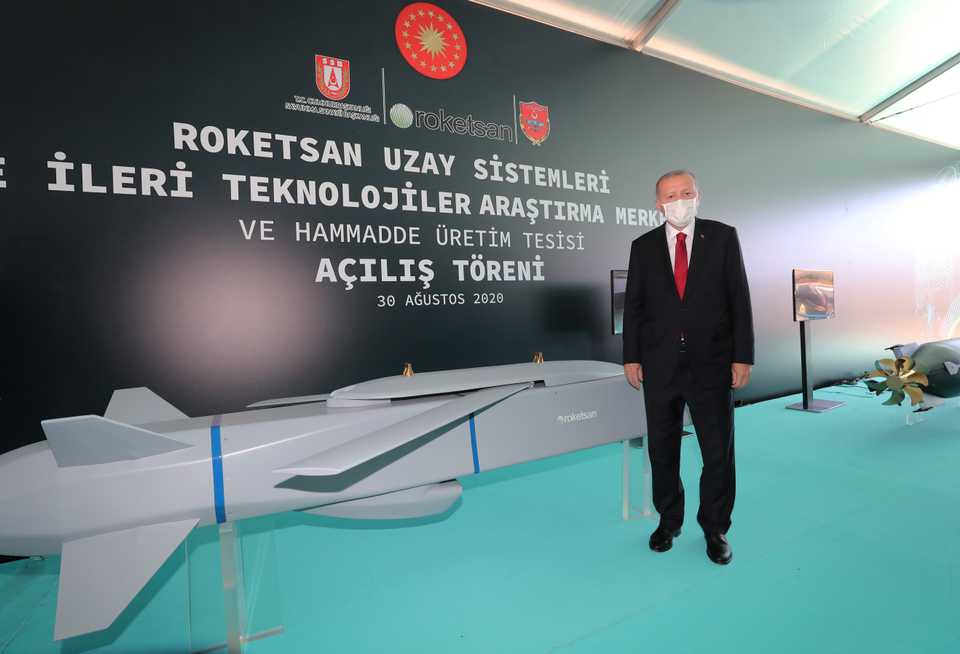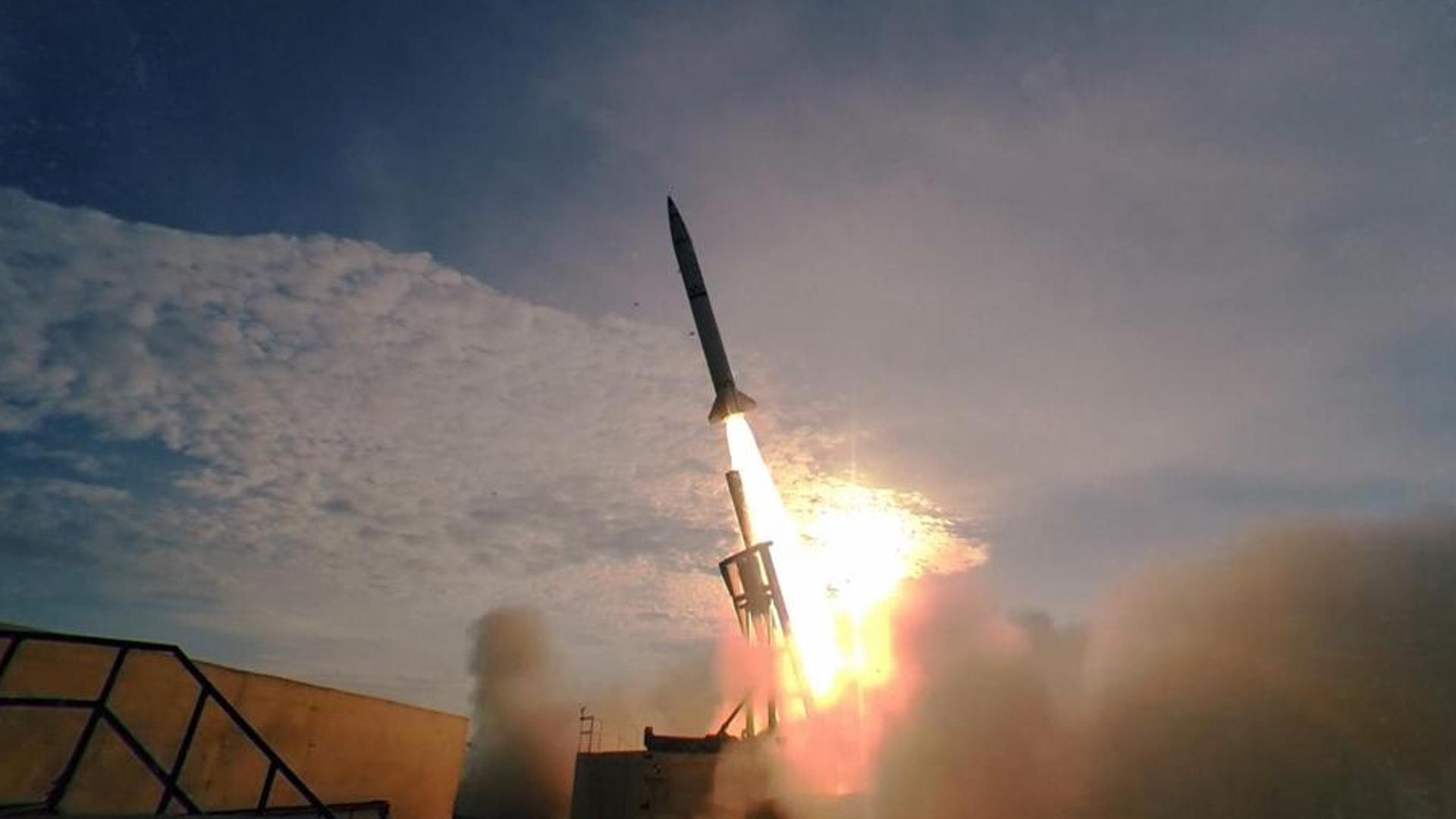Turkey augments its rocket industry by producing liquid-propellant rocket engines domestically and opening the new chapter for the country defence sector.
President Recep Tayyip Erdogan announced the starting of “the first space trials of domestically developed liquid-propellant rocket engine technology,” at the opening ceremony of Roketsan’s production facility and research center in the country’s capital Ankara.
“We will also continue our efforts to develop hybrid fuel rocket engines,” Erdogan said, while addressing people at the ceremony.
Roketsan has developed high-capacity hydrogen fuel cell technology, a clean energy source with applications for the space sector, as well as aviation and transportation.
“The GPS receivers needed for precision-guided munitions and weapon systems have also been produced domestically for the first time,” said the president.

“At this centre, we are working on technologies of the future, such as miniature weapons, hypersonic systems, and laser and directed-energy weapons using electromagnetic technology,” he added.
Turkey has been making significant strides towards strengthening its rocket technology in the past few years. The country’s defence sector is already producing short-ranged missiles and their engines.
According to Erdogan, Turkey has reduced external dependency for defence technology from 70 percent to 30.
‘Atmaca’ enters inventory by the end of year
President Erdogan also said Turkey’s first naval anti-ship missile Atmaca will be entering the army’s inventory by the end of 2020.
Atmaca is a high precision, long-range, surface-to-surface, precision strike anti-ship missile which can be integrated to patrol boats, frigates and corvettes.
The missile of Atmaca has also some advantages, which make it effective in the combat area, such as being autonomous, having low radar signature, high precision and resistance to countermeasures.
It can also be operated in all-weather conditions. With 250 kilograms of highly explosive warhead, the missile could hit targets as far as 200 kilometres away.
TUSAS Engine Industries (TEI) tested its first medium-range missile engine on June 19.
The 400-horsepower engine could generate 1,300-newton thrust despite its small size.
Although the engine was designed to be used for medium-range-anti-ship missiles, it can be used in several different platforms.
HISAR-A and HISAR-O
Turkey has already deployed its domestically produced HISAR-A and HISAR-O air defence systems.
The HISAR project started in 2007 and is part of the Turkish air defence technology.
HISAR-A is capable of hitting targets within the range of 15 kilometres and at a ten-kilometre altitude.
It allows the armed Unmanned Aerial Vehicles (UAV) to navigate through the low-altitude air space and hit targets with precision by reducing the possibility of getting hit by low-flying helicopters and jets.
It consists of a Self Propelled Autonomous Low Altitude Air Defence Missile System, Missile Launch System, Low Altitude Missile and Missile Transport and a Loading System, which was developed by Turkish leading defence industry companies ASELSAN and ROKETSAN.
In March 2019, it had a hundred percent success rate in test-firings by hitting a high-speed target aircraft. Moreover, HISAR-A also hit the second target with the change of engagement after it fired at the first one.

On the other hand, HISAR-O is capable of hitting long-distance targets at high altitudes. It could hit fighter planes, helicopters, UAVs, cruise missiles and air-to-land missiles.
It can neutralise targets within a range of 25 kilometres with at least 18 missiles ready to launch. HISAR-O can simultaneously detect and track more than 60 warplanes within a range of 40-60 kilometres.
A land-based transportable system KORAL, which is capable of intercepting, jamming and deceiving radar systems, is also being used in operations.










Discussion about this post